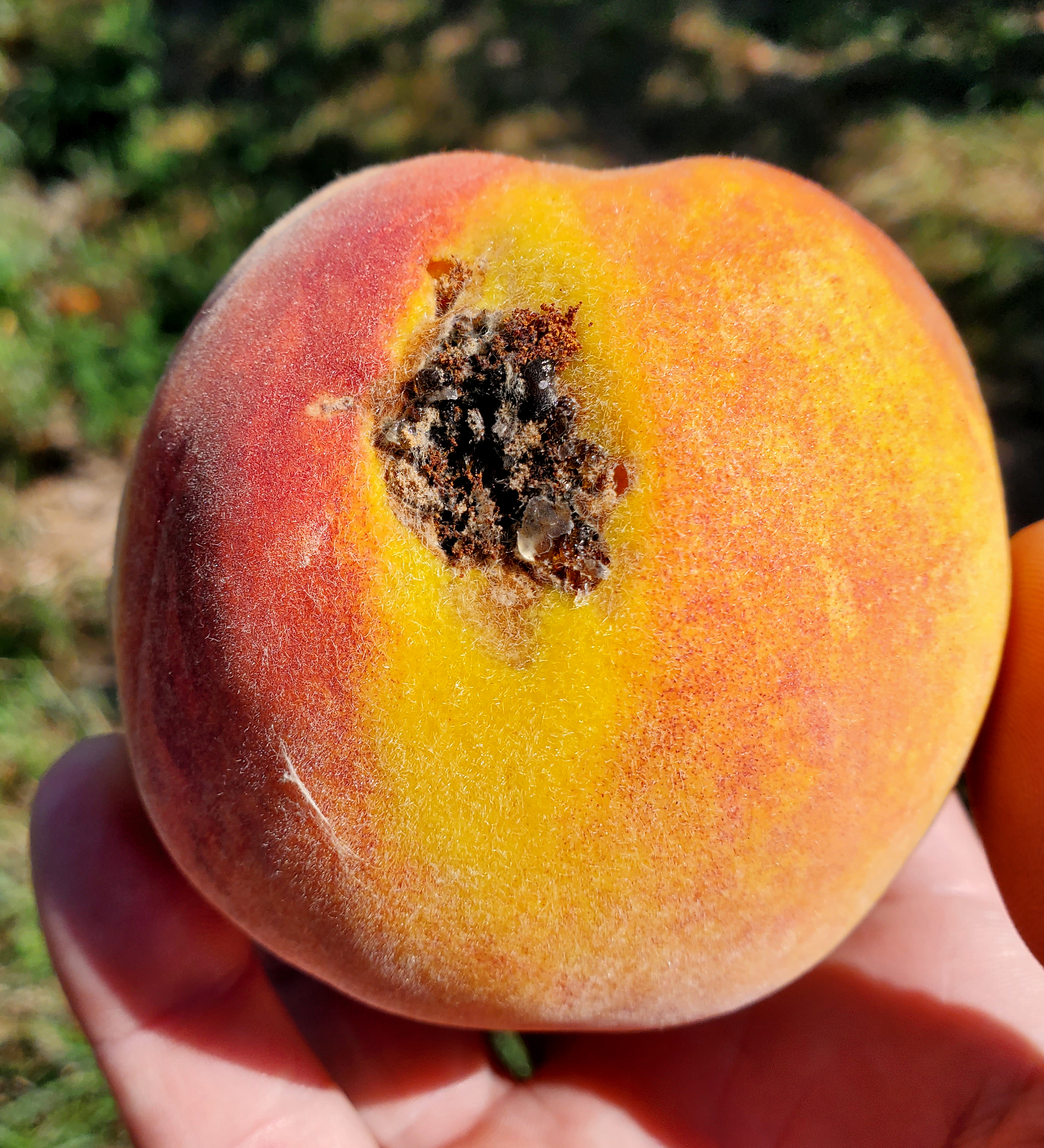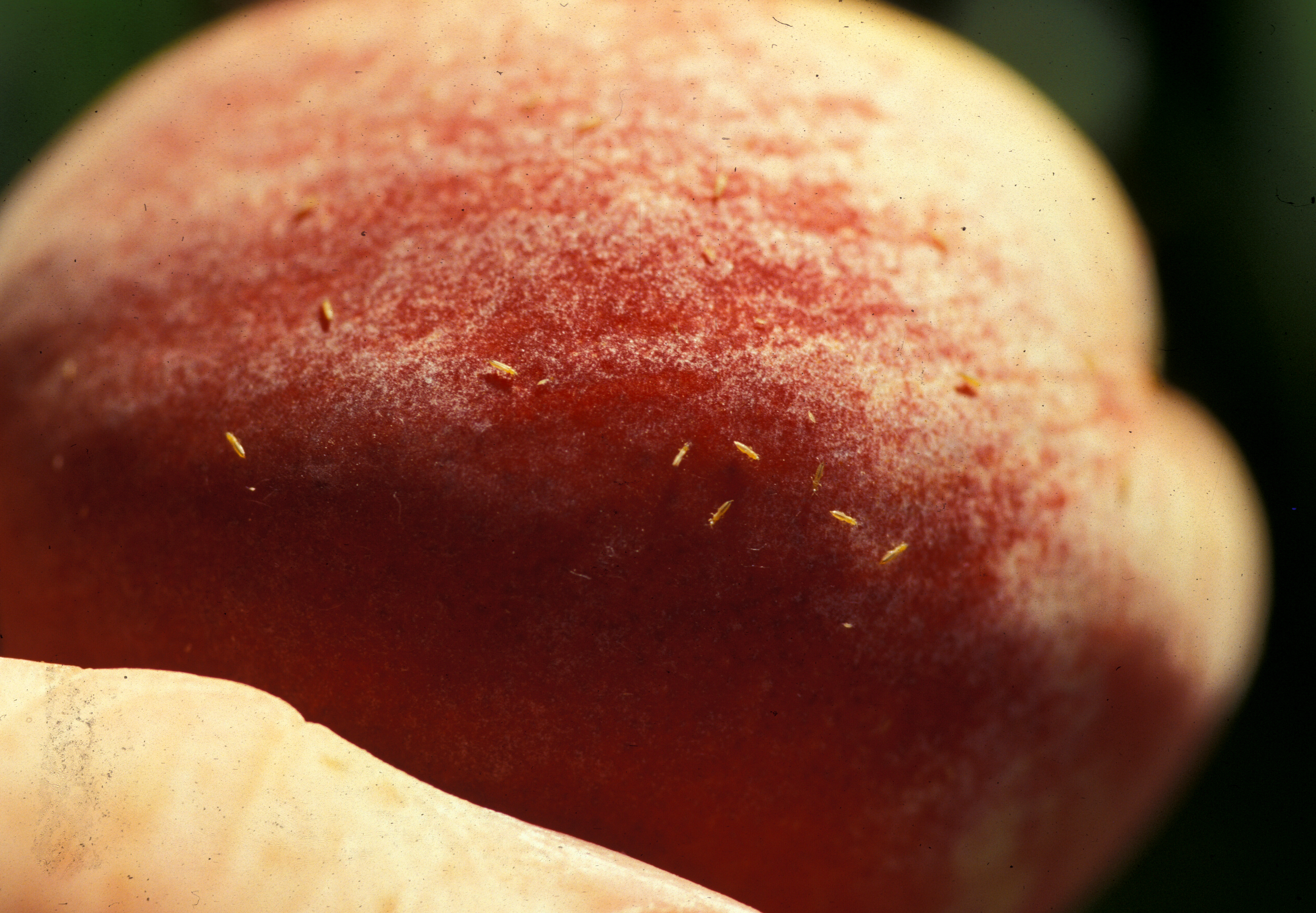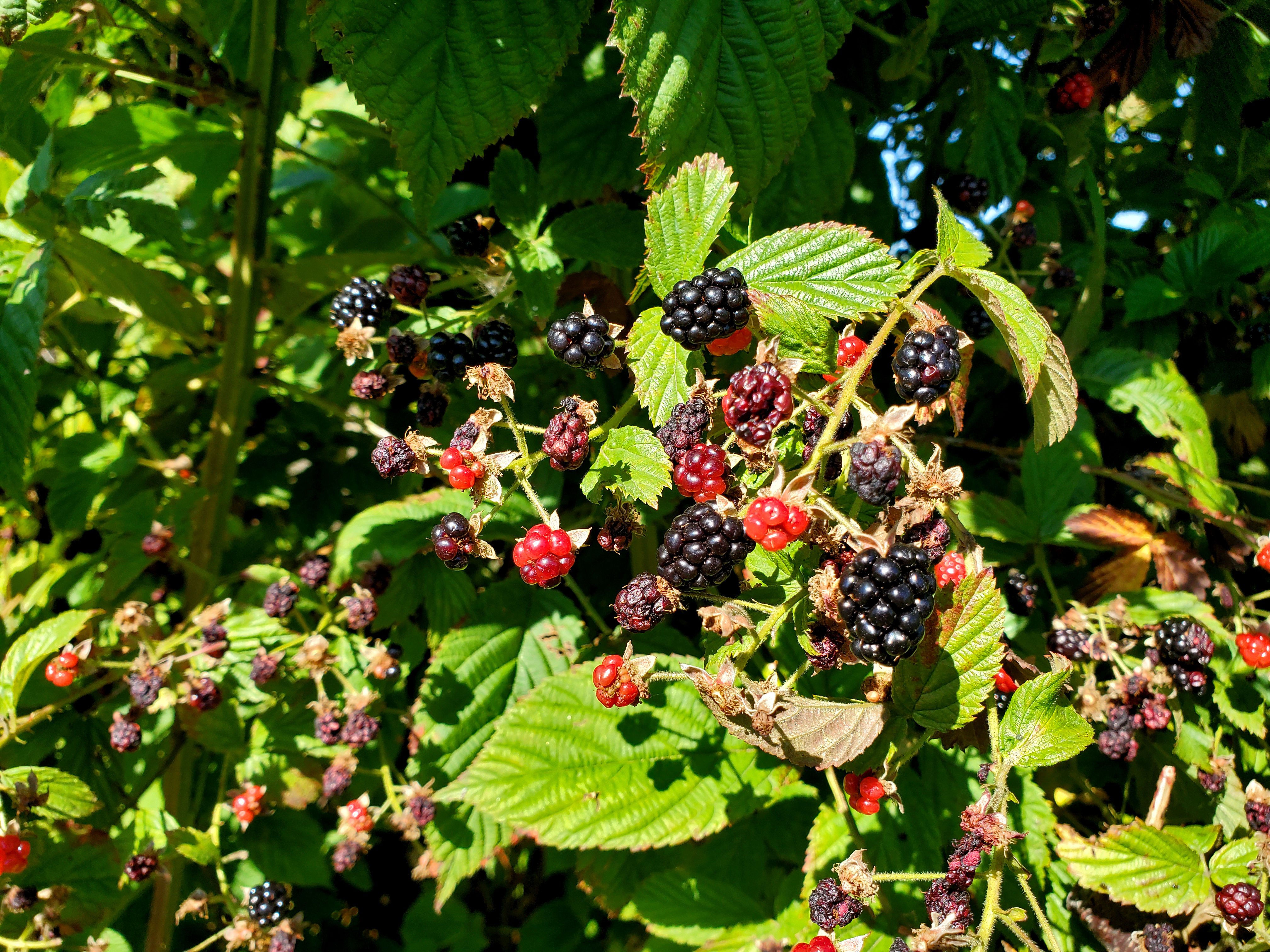Southwest Michigan fruit update – Aug. 18, 2020
A derecho blew across the region last Monday, leaving damage in its wake. The most affected agricultural areas appear to be western and southern Berrien County.

Weather
Last week started with thunderstorms Monday morning, Aug. 10, followed by a strong derecho Monday evening with rain and strong, straight-line winds. This storm caused significant property damage in some areas. Berrien County was probably the worst hit area in the region. Damage to fruit farms was relatively minor. Ripe fruit was blown from the trees and remaining fruit was bruised. Portions of grape and hop trellises were also blown down, but this damage was not widespread.
The week was dry after Monday’s storm and showers passed through the region Monday, Aug. 17, through the weekend. The upcoming week will be dry. The best chance of rain is the weekend and early next week.
With a warm week, we picked up more growing degree days (GDD) last week: 213 GDD base 42 and 157 GDD base 50, respectively 30 and 22.4 per day.
|
Southwest Michigan GDD summary from March 1 – Aug. 16, 2020 | |||
|---|---|---|---|
|
Station |
GDD 42 F |
GDD 45 F |
GDD 50 F |
|
Benton Harbor (SWMRC) |
3070 |
2692 |
2109 |
|
Lawton (Lawton) |
3038 |
2657 |
2070 |
|
Fennville (TNRC) |
2858 |
2487 |
1917 |
|
Average for the SW region |
3019 |
2640 |
2058 |
|
Average last week |
2806 |
2448 |
1901 |
Tree fruit
Rainfall this summer has been scarce, and we are seeing signs of stress in forest trees and some fruit plantings. Codling moth numbers are generally low, but high numbers are being found in a few orchards. Oriental fruit moth numbers are up with the emergence of the third generation. Catch of the second generation of obliquebanded leafroller is increasing. Brown marmorated stink bug adults from the summer generation are being caught. These numbers will continue to build over the next month. San Jose scale crawlers began showing about two weeks in the southwest region.

In peaches and nectarines, we are in the PF Lucky 13, Bounty and Canadian Harmony harvest windows in central Berrien County. Recent sunny conditions have promoted relatively high sugar content. Fruit with bacterial spot and insect damage are prone to brown rot and Rhizopus rot. Rhizopus causes a brown colored rot with a loose skin, unlike the relatively firmer brown fruit rot. It forms grayish black sporangiophores on the surface of fruit. Rhizopus is primarily a disease of overripe fruit in storage, particularly if the storage temperature is above 40 degrees Fahrenheit. Brown rot shows up as a fruit rot before and after harvest.
The third generation of oriental fruit moth is out now. Western flower thrip is causing white blotches on red blush areas of peaches in some sites.

Cherry harvest is over. Recent dry weather reduced cherry leaf spot infections, but a new wave of yellow infected leaves has appeared the in treetops. To maintain good tree health and winter hardiness, continue to protect the leaves from cherry leaf spot into September. See: Low spray programs for tart cherry.
In plums, harvest of summer plums continues. Castleton harvest is underway. Brown rot is showing up on insect damaged fruit. Plums held on the tree until soft ripe are susceptible to spotted wing Drosophila attack.
Apples being harvested include Pristine and Paulared. Codling moth is still flying in most orchards. Oriental fruit moth numbers are up, signaling the start of the third generation adults. Bitter rot is showing up as well as other summer fruit rots. Maintain sooty blotch and flyspeck protection with reapplication when rain has likely reduced coverage.
Apple maggot numbers usually peak in August; adult flies emerge after about .025 inches of rain. Place traps to monitor susceptible sites. Potato leafhopper burn is pretty common this year in many crops. For our predicted apple harvest dates, see: Predicted 2020 apple harvest dates for southwest Michigan.
Pear Bartlett fruit harvest should start late next week. Codling moth, obliquebanded leafroller and pear psylla are the primary insect pests now. Like apples, protect pears against sooty blotch and fly speck.
Small fruit
Japanese beetles are scarce. Spotted wing Drosophila (SWD) numbers are up in southwest Michigan with cooler weather. SWD numbers increase rapidly in August. Collect leaf samples for foliar tissue analysis from mid-July to mid-August.

In grapes, veraison continues. We are beginning to see color in Concord grapes. The disease focus is on reducing the spread of downy mildew and powdery mildew. Downy mildew spreads rapidly when we have heavy dews in the morning. Scout for downy mildew on the leaves and protect healthy leaves from infection. Downy mildew can defoliate the vines in August. Powdery mildew prefers humid, warm weather. Powdery mildew seems to be widespread this year.
Grape berry moth are up, indicating the third generation is flying. The grape berry moth model on Enviroweather predicts egglaying began about Aug. 2 in Berrien and Aug. 7 in Van Buren counties. See: August is key time for protecting clusters from grape berry moth. Growers who have had trouble with grape berry moth in the past may need more than one spray. Apply the second spray about two weeks after the first. It seems likely we will see a fourth generation this year.
Blueberry harvest continues. Growers are harvesting late season varieties such as Aurora and Elliott. Maintain irrigation after harvest to maintain plant vigor. If you are still harvesting fruit, maintain tight coverage for SWD. SWD really likes cool conditions. In general, many fields look ragged many with red leaves which seem to be a sign of stress
Strawberries in matted rows have filled out the rows and are sending out runners. Maintain protection against potato leafhopper and leaf spot diseases.
In brambles, blackberry harvest continues. Fall raspberry harvest will start soon. SWD is the major insect pest of brambles and can destroy the crop quickly. Treat SWD as a disease and focus on keeping it out. Do not let this pest become established in the field. Pick ripe fruit frequently so that ripe fruit are not available to the pest for long.
 cropped.jpg?language_id=1)
Related resources
- Southwest Michigan fruit update – August 11, 2020
- Predicted 2020 apple harvest dates for southwest Michigan
- Managing Brown Marmorated Stink Bug in Michigan Orchards
- Low spray programs for tart cherry.
- Michigan grape scouting report – August 12, 2020
- August is key time for protecting clusters from grape berry moth
- Irrigating Michigan blueberries



 Print
Print Email
Email




